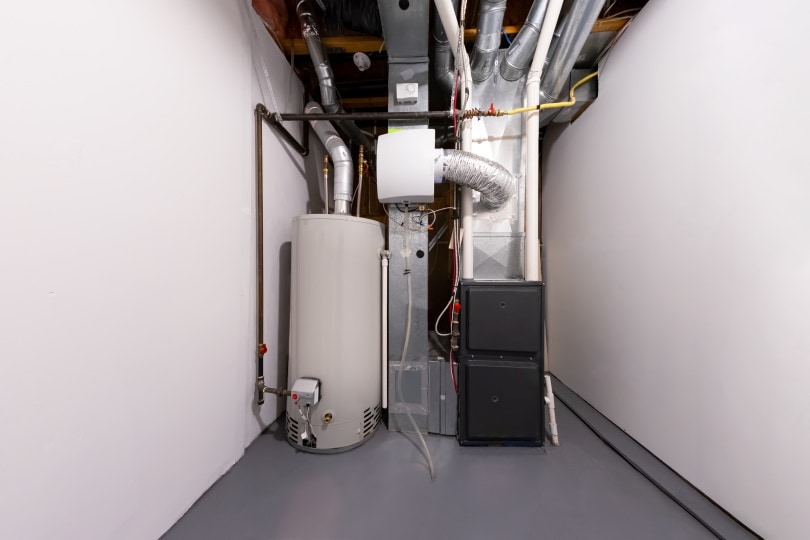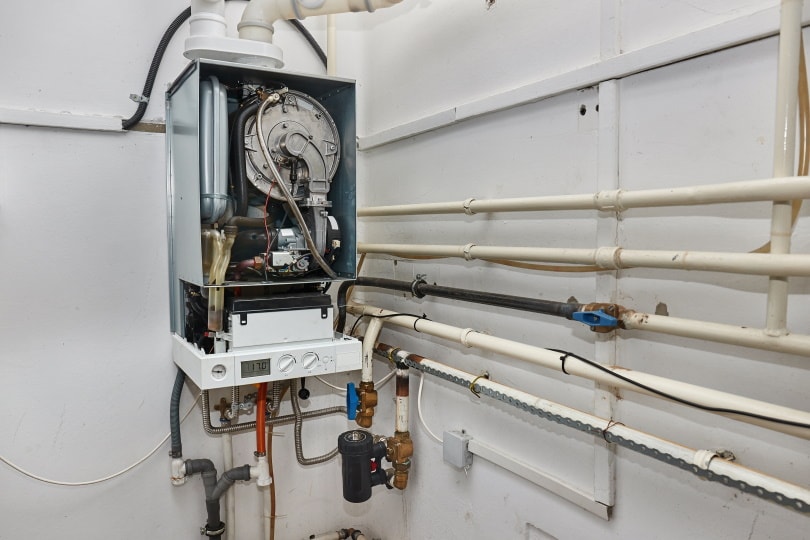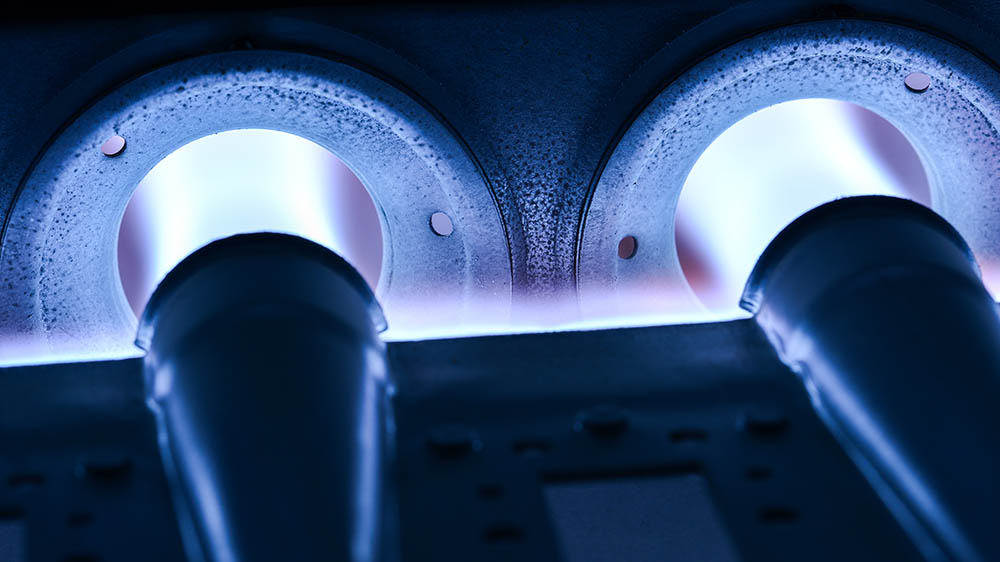When to Replace a Furnace – 7 Signs to Look For
-
Kristin Hitchcock
- Last updated:

Just like every piece of home equipment, furnaces will break down and need repairs at some stage. Sometimes, these repairs are straightforward and inexpensive. Other times, they can be nearly as expensive as the furnace itself! Therefore, if your furnace is breaking down or getting old, you may be wondering if you should simply purchase a new one altogether.
There is no one-size-fits-all answer, as there are many factors to consider. The lifespan of your furnace and its effectiveness are only some of the things you need to consider.
However, there are some universal signs that your furnace needs replacing, which we will discuss below. If your furnace begins displaying one or more of these, it is probably time to invest in a new one.
The 7 Signs to Look for When Considering Replacing a Furnace
1. Over 15 Years of Age
Most furnaces are designed to operate for 15 to 30 years. If yours is older than 15, you may want to start replacing it sooner rather than later. While many furnaces can last for upwards of 30 years, this is typically after they have undergone many repairs. You’ll have to consider whether repairs are worth the extra years your furnace will give you—or if it is cheaper to go ahead and replace the furnace.
Of course, there are many factors at play here. Some furnaces may last 20–30 years if they run on electricity. However, gas furnaces are engineered to run from 15–20 years, so you’ll want to think about replacing these as soon as they hit their 15th birthday.
There are several ways you can improve your furnace’s lifespan. Regular maintenance is an easy and relatively inexpensive way to help make your furnace last longer. You’ll want to replace dirty filters to prevent overexerting your furnace. Ensuring that your doors and windows are energy-efficient does the same thing.
2. Temperature Fluctuations

While the age of the furnace does give you a key as to whether you need to replace it or not, a sure sign that you need a new furnace is temperature problems inside your home. If your furnace is having trouble heating your home, or there seem to be heating differences compared to previous years, your furnace could probably do with replacing.
As furnaces get older, they will slowly become less efficient. At first, you may not notice a huge difference. However, as it gets particularly old, things may start being more noticeable. With age, your furnace will be unable to distribute heat evenly and you may notice that different rooms are warmer than others. Some rooms may not seem like they are heated at all.
3. Soot
When you are cleaning, you may begin to notice soot collecting in several rooms. Many homeowners notice it in the kitchen first, as it tends to be very noticeable on the clean, white surfaces. This soot is potentially dangerous and can damage the items inside your home. Usually, it is accompanied by very dry air, which may be difficult to breathe or even kill plants.
Furnaces that produce high amounts of soot are usually producing too much carbon dioxide, which then causes buildup. Usually, this occurs with age and reduces efficiency. This soot can also get trapped in air filters, which may mean that they need to be changed more often.
4. Strange Noises

Unusual noises can signal that there’s something wrong with your furnace. Costly repairs are often not worth it if your furnace is older anyway, as their lifespan is likely coming to an end. If you notice new noises, they are not always a sign of an underlying problem. However, it is best to consult with a professional in these cases and determine a cause.
Of course, all furnaces do make noises of some sort and common, everyday noises do not fall in this category. However, if you notice that the noises change after 20 years, then you probably have a problem on your hands.
5. Higher Energy Bills
A furnace that is not very efficient will cause higher energy bills. The furnace will take the same amount of energy and make less heat with it, raising your overall costs. Usually, this increase is slow and easy to miss. However, we do recommend logging and paying attention to your energy bills each month, as changes can be linked to underlying problems.
Of course, higher energy bills can be caused by all sorts of things. However, an aging furnace almost always causes higher energy costs.
6. Varying Flame Color

The flame color your furnace is producing will hint at how efficient it is. A blue flame is preferable and often the color new furnaces produce. However, as your furnace becomes less efficient, it may fade to yellow. Plus, a yellow flame can indicate a gas leak and the presence of dangerous chemicals, like carbon monoxide.
If you notice a yellow flame, we highly recommend contacting a professional right away, especially if you do not have a carbon monoxide detector in your home. A yellow flame can be downright dangerous.
7. Repair Costs
If your furnace is in the need of costly repairs, it may be an obvious sign that you should simply replace it. If your furnace is over 20 years old plus high repair costs should be a sign that you need to replace your furnace. There is no need to pay tons of money to repair a furnace that is only going to last a few more years, anyway.
If a furnace is less than 15 years, the high repair cost may be worth it if you can extend the machine’s lifespan by another 10 years. However, in models that are already less efficient, this may not be possible.
Conclusion
There are several things you should keep in mind when determining whether to replace your furnace or not. Most homeowners consider replacing their furnace when they come up against high repair costs. If your furnace is older and already showing signs of becoming less efficient, then you’re probably better off simply replacing it.
Most furnaces only last between 15 and 30 years. The type of furnace it is matters, as electric furnaces tend to last longer. Once your furnace begins approaching this age, it does not always make much sense to repair it. Instead, it’s often cheaper, in the long run, to replace it whenever its efficiency is clearly decreasing or repairs are needed.
See also:
Featured Image Credit: oasisamuel, Shutterstock
Contents

